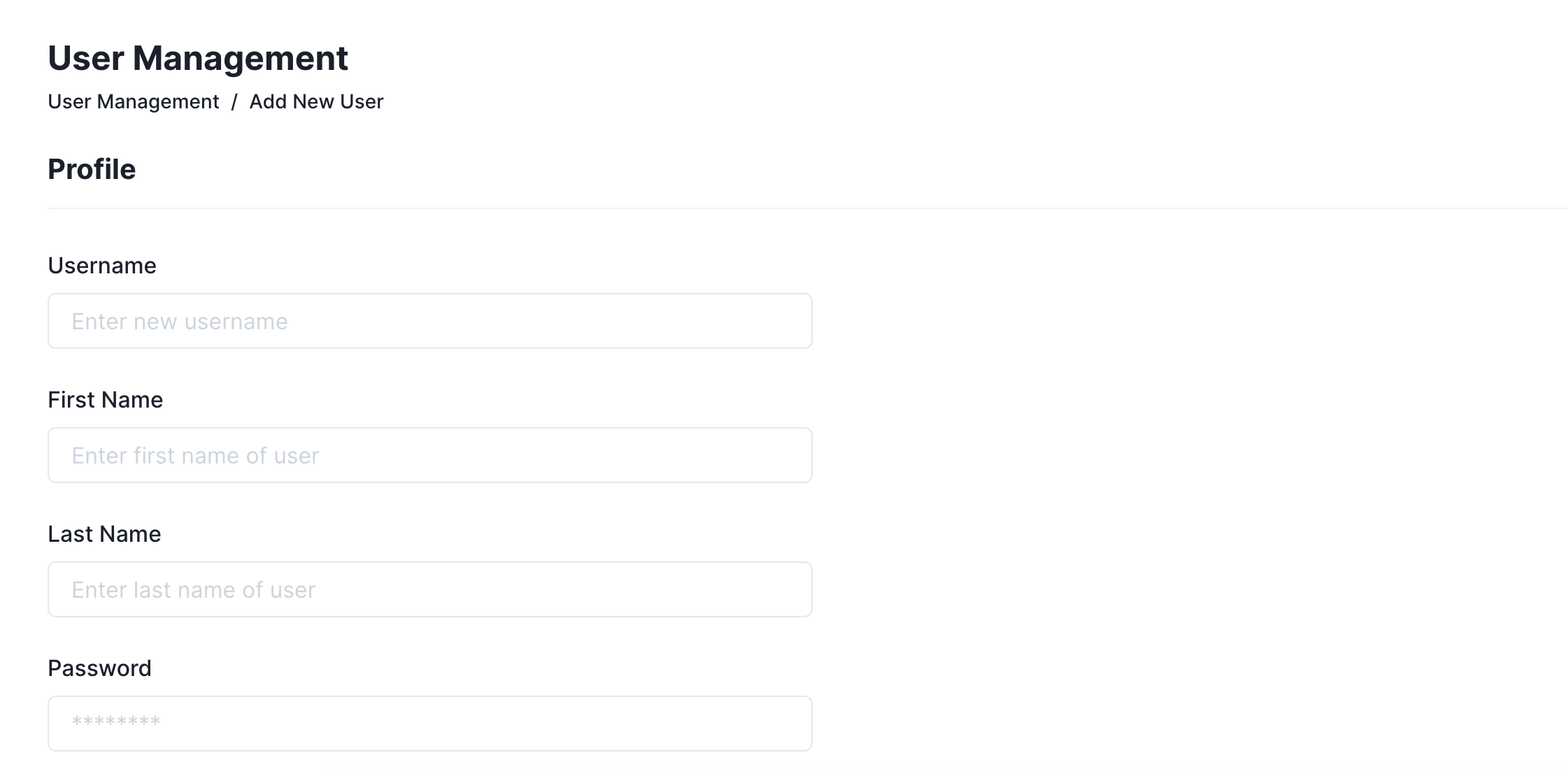User Management
Fidesops users can be easily managed from both the built-in control panel, and a series of API endpoints.
Managing Users from the UI
The User Management panel displays a view of all users within the system, and provides a search bar for retrieving users by username.

Creating New Users
The Add New User button can create a new user:

Managing User Privileges
New users can be created with a series of privileges, or permissions, to allow or restrict their access to individual parts of your fidesops configuration.
Privileges
Privileges represent individual user permissions. Ensure each user is created with the permissions applicable for their role.
| Privilege | Description |
|---|---|
| View subject requests | All users are able to view subject requests by default. |
| Approve subject requests | Allows the user to process/approve submitted DSRs. |
| View datastore connections | Allows the user to view, but not edit, any existing connections to your datastores. |
| Create or Update datastore connections | Allows the user to create new datastore connections, and update existing connections. |
| Delete datastore connections | Allows the user to delete existing datastore connections, removing them entirely from fidesops. |
| View policies | Allows the user to view existing fidesops policies. |
| Create policies | Allows the user to create new fidesops policies. |
| View users | Allows the user to view the User Management panel. |
| Create users | Allows the user to create new users from the User Management panel. |
| View roles | Allows the user to view, but not edit, existing roles. |
| Create roles | Allows the user to create new roles. |
Editing Existing Users
Existing users can be edited by selecting the "Edit" button from the side of the user row. Users may also be deleted from this drop-down menu. Note that an individual's username may not be changed.

Managing Users from the API
Fidesops provides several user-related endpoints for managing access to the control panel. Example requests are included in the fidesops Postman collection.
User and Endpoint Scopes
User permissions are managed through access tokens, which contain scopes associated to individual endpoints. Endpoint access can be restricted by removing their scope from an access token.
Creating a user currently provides access to all scopes.
User Passwords
All user passwords must by Base64 encoded before creating a new user, logging in, or changing a users password. This can be done with base64encode.org. After Base64 encoding, the password Suitablylongwithnumber8andsymbol$ would become U3VpdGFibHlsb25nd2l0aG51bWJlcjhhbmRzeW1ib2wk.
Logging in
1 | |
| Request Body | |
|---|---|
1 2 3 4 | |
Successful POST requests to the login endpoint will return an access_token with all available scopes. This token can be used to make subsequent requests to the Users endpoints.
Logging out
1 | |
| Authentication | Scope | Description |
|---|---|---|
| Bearer token | N/A | An access_token returned from login. |
The logout endpoint will invalidate the provided access_token, which must be included as the Bearer token in your request.
Creating a user
1 | |
| Request Body | |
|---|---|
1 2 3 4 | |
| Authentication | Scope | Description |
|---|---|---|
| Bearer token | user:create |
An access_token returned from login. |
The user endpoint will create an additional user with the username and password provided in the request body. An access_token with a scope of user:create is required.
Deleting a user
1 | |
| Authentication | Scope | Description |
|---|---|---|
| Bearer token | user:delete |
An access_token returned from login. |
An access_token with a scope of user:delete is required, and must be associated to the Admin UI Root User, or the user you are trying to delete.